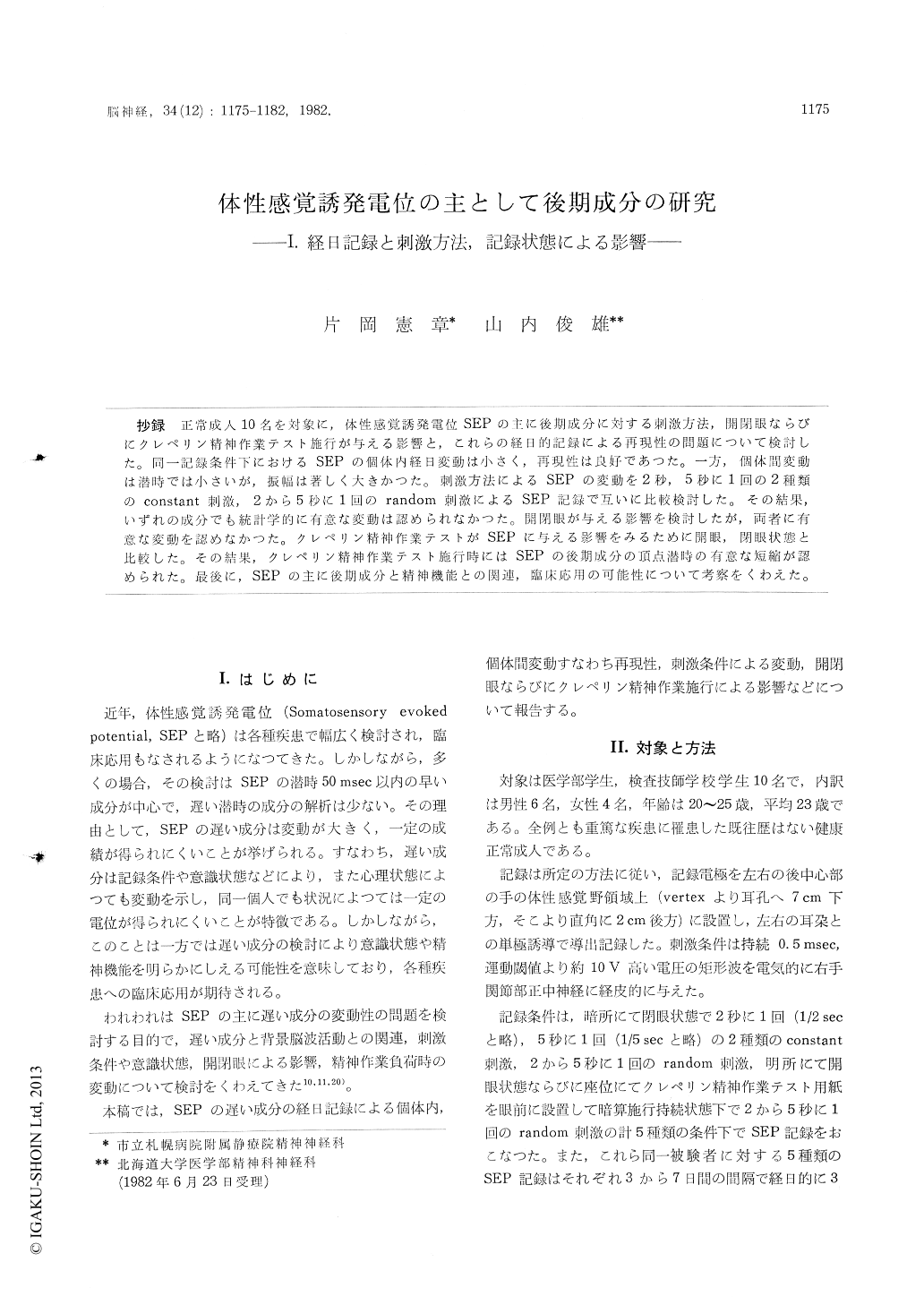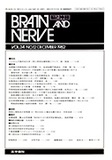Japanese
English
- 有料閲覧
- Abstract 文献概要
- 1ページ目 Look Inside
抄録 正常成人10名を対象に,体性感覚誘発電位SEPの主に後期成分に対する刺激方法,開閉眼ならびにクレペリン精神作業テスト施行が与える影響と,これらの経日的記録による再現性の問題について検討した。同一記録条件下におけるSEPの個体内経日変動は小さく,再現性は良好であつた。一方,個体間変動は潜時では小さいが,振幅は著しく人きかつた。刺激方法によるSEPの変動を2秒,5秒に1回の2種類のconstant刺激,2から5秒に1回のrandom刺激によるSEP記録で互いに比較検討した。その結果,いずれの成分でも統計学的に有意な変動は認められなかつた。開閉眼が与える影響を検討したが,両者に有意な変動を認めなかつた。クレペリン精神作業テストがSEPに与える影響をみるために開眼,閉眼状態と比較した。その結果,クレペリン精神作業テスト施行時にはSEPの後期成分の頂点潜時の有意な短縮が認められた。最後に,SEPの主に後期成分と精神機能との関連,臨床応用の可能性について考察をくわえた。
The aim of this study was to explore the vari-ances of the late components of somatosensory evoked potential (SEP) in successive recordings, different stimulus manoeuvre and recording conditions.
In the first part of the study, the differences of SEP due to the different recording order andalso the differences of those due to the different stimulus maneuvre and recording conditions were studied with 10 normals subjects.
The constant stimuli were applied at 2 and 5 second intervals, respectively (group I and II). The random stimuli were given at irregular 2 to 5 second intervals (group III). These three kind of SEP were recorded from each of subject on three times at intervals of several days.
1) Intra- and inter-individual variances of SEP elicited by constant stimuli which were applied at 2 second interval were studied. Intra-individual variances of SEP were smaller, but inter-individual variances of SEP were much larger in amplitudes of the late components of SEP.
2) The mean (±SD) latencies and amplitudes of SEP of group I, II, and III were compared with each recording order and examined statistically. However, there were no statistically significant differences among the SEPs recorded at first, second and third day.
3) The mean (±SD) latencies and amplitudes of SEP of group I, II and III were compared with each other and examined statistically.But, no components showed statistically significant differences among the three groups.
In the second part of the study, the relationship between the recording condition and variances of SEP elicited by same stimulation procedures were studied with 10 normal subjects during eyes open (group 1), close (group 2) and Kraepelin Rechen-test (group 3).
4) SEP changes due to the different recording order were studied and examined statistically in each group. However, there were no statistically significant differences of latencies and amplitudes of SEP in each three groups.
5) The differences of SEP in group 1 and 2 were compared with each other and examined statistically. But, no components showed statisti-cally significant differences between the two groups.
6) The differences of SEP in group 1, 2 and 3 were compared with each other and examined statistically. However, no components showed statistically significant amplitude differences among the three groups. But the latency of the late components of SEP in group 3 were statistically significant shorter than those in group 1 and 2.
The clinical significance of these findings were discussed.

Copyright © 1982, Igaku-Shoin Ltd. All rights reserved.


